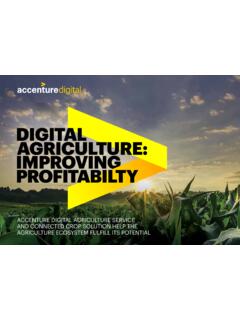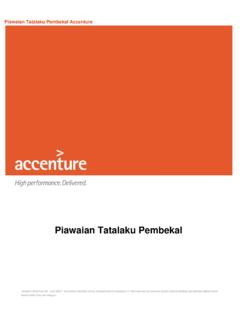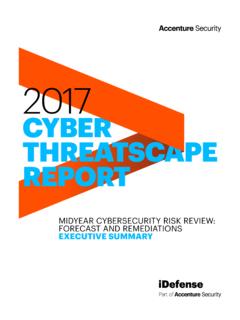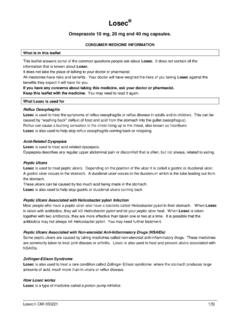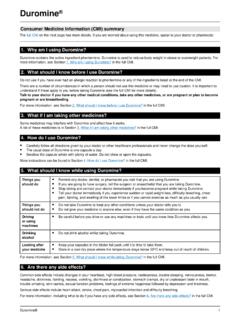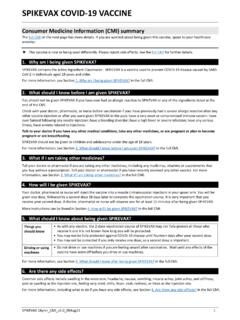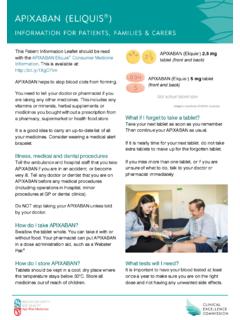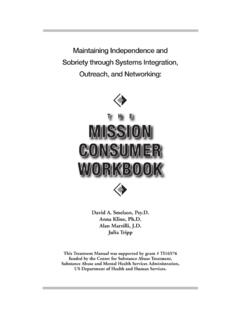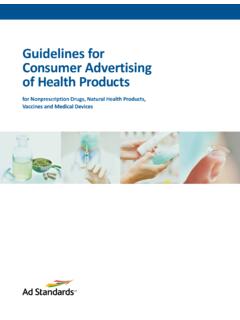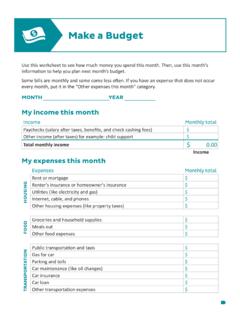Transcription of How COVID-19 will permanently change consumer behavior
1 NOWNEXTCOVID-19: What to do Now, What to do NextApril 2020 How COVID-19 will permanently change consumer behaviorFast-changing consumer behaviors influence the future of the CPG industry2 The COVID-19 pandemic has fundamentally changed the world as we know it. People are living differently, buying differently and, in many ways, thinking differently. Supply chains have been tested. Retailers are closing doors. Consumers across the globe are looking at products and brands through a new lens. The virus is reshaping the industry in real-time, rapidly accelerating long-term underlying trends in the space of mere weeks. Our research indicates that new habits formed now will endure beyond this crisis, permanently changing what we value; how and where we shop; and how we live and as this crisis continues to evolve, by exploring the changes that are happening now, we can consider what consumer goods businesses should do today to prepare for what s re all in this together3 Consumers are deeply concerned about the impact of COVID-19 , both from a health and an economic perspective.
2 People are responding in a variety of ways and have differing attitudes, behaviorsand purchasing habits. The mix of personas that consumer packaged goods (CPG) companies need to engage with will vary depending on the stage of the outbreak and the local cultural across the globe are afraid as they strive to adapt to a new normal. Fear is running high as individuals contemplate what this crisis means for them, but more significantly, what it means for their families and friends, and the society at large. The highest level of fear is around the impact on the economy, with 88% of consumers revealing they are worried, while 82% worry about the health of others, exceeding the fear for personal health or personal job security.
3 This seemingly ubiquitous lack of consumer confidence illustrates the challenge ahead once we are ready to restart the to know the consumer in crisis4 Consumers are more fearful of the economic impact of COVID-19 than for their healthI am worried about the impact on the am worried about the impact on my personal job am fearful for the health of am fearful for my own 1. Consumers fear for themselves along with the broader societySource: Accenture COVID-19 consumer Research, conducted April 2 of consumers that agree or significantly agree5 Meet five new types of consumers Consumers are responding to the crisis in a variety of ways. Some feel anxious and worried, fueling the panic-buying of staple and hygiene products.
4 At the other extreme, some consumers remain indifferent to the pandemic and continue their business as usual, despite recommendations fromthe government and health professionals. CPG companies will need to understand how their consumers are reacting and develop customized and personalizedmarketing strategies for each type of consumer . The days of one-size-fits-all marketing are five consumer archetypes we identified through our research include: I'm a senior citizen. I have underlying conditions. I mnot willing to take chances. 56 69 year-old male Both my husband and I will be fine. I'm more concerned about people acting stupid and buying up all the toilet paper, then selling it price gauge style.
5 18 24 year-old female I'm not concerned. All I cando is keep things and myself clean. I hope others do the same. 25 31 year-old female I want to maintain social distance. This is not only formy self preservation, this isour social responsibility. 25 31 year-old female This is seriously being blownout of proportion. 40 55 year-old femaleThe nonchalant person who is carrying out business as usual, we call the Indifferent. He or she is the least informed of all consumer types and is unlikely to be aware of, or comply with, the government s advice. Perhaps, as a result, they are 39% less likely to feel stressed or anxious vs. other consumer Activist is looking out for and supporting others in the community.
6 This person is helping ensure there s enough to go around by buying what they need, as needed,and is 59% more likely to be shopping more for people beyond their immediate household. Activists are highly active in new forms and formats of social individual is fearful of the future, anxious and reactionary particularly with his or her purchases. He or she (77%) is worried about his or her health and is 25% more likely to be stressed or anxious as a result of the virus. This person is highly aware of Individualist looks out for himself or herself, stockpiling essentials (because everyone else is) and trying to ensure he or she can maintain his or her status quo. This type of consumer is more likely to keep to himself or herself only 35% feel more connected to their neighbors because of the crisis.
7 Compared to other consumer types, Individualists are 9% less likely to approve of their government s person has a keep calm and carry on mentality. He or she has a high awareness of news 82% are keeping more informed sorting information into what is useful vs. what is not. He or she has increased the purchase of only advised products, such as personal hygiene, cleaning and staple WORRIER21%THE INDIVIDUALIST22%THE RATIONALIST39%THE ACTIVIST8%THE INDIFFERENT11%6 These consumer types help us understand the changes that consumers are making to their purchases. The biggest change is in the consumption of personal hygiene products. Worriers increased these purchases by 50% vs. just by the Indifferent.
8 Cleaning products and tinned food follow closely with a and overall net increase, respectively. Shifts in purchasing behavior7 The panic index: consumer types help understandhow purchasing is shiftingIncreasing > 5%Decreasing >5%As NormalNet purchases*The Worrier21% of consumersThe Individualist22% of consumersThe Rationalist39% of consumersThe Activist8% of consumersThe Indifferent11% of consumersTotalnet changeChangeWave 1 Wave 2 Personal and d Consumption:*Net purchases measured as a % of consumers increasing purchasing, less the % decreasing purchasing vs. prior two weeksSource: Accenture COVID-19 consumer Research, conducted April 2 634% of consumers are increasing their purchase of personal hygiene products while cutting back on more discretionary categoriesFigure 2.
9 The Panic IndexConsumers attitudes shift as the pandemic progresses. We split the 15 markets in our survey into three categories developing, advancing and stabilizing based on the stage of an outbreak at the time of our survey. The proportion of both Worriers and Activists decreases, while the Individualists and Indifferentsincrease in stabilizing markets. However, we also need to consider the cultural factors at play. Prior experience with SARS in Asian markets as well as the high levels of trust in the government (72%) strongly influence how consumers have reacted. No matter what the market is, it will be important for CPG companies in the future to engage with governments and other trusted agencies as part of their brand and consumer engagement in attitude6%10%18%8%10%39%41%34%21%19%32%2 6%21%14%9 consumer attitudes change as the pandemic progresses, with the lowest proportion of Worriers in markets where the outbreak is stabilizingSource: Accenture COVID-19 consumer Research, conducted April 2 6.
10 Countries are grouped based on the stage where they are in the outbreak at the time of fielding, measured by the time since the first 100 cases were diagnosed in each country and the weekly increase in new casesDevelopingAdvancingStabilizing2%NEW DAILY CASESW orriersIndifferentActivistsIndividualist sRationalistsFigure 3. Consumers attitudes shift as the virus is stabilized10 Why, what and how consumers buy is changing due to the COVID-19 outbreak. consumer priorities have become centeredon the most basic needs, sending the demand for hygiene, cleaning and staples products soaring, while non-essential categories slump. The factors that influence brand decisions are also changing as a buy local trend accelerates.



